|
“Underwater Archeology Center to be
Established in the Persian Gulf”
December 19, 2006, ICHNA, Iran:
“A research center for underwater archeology will be established in the Persian Gulf as the first attempt to recover the Partho-Sassanid shipwreck discovered last September at a depth of 70 meters near Siraf Port.
However, the ship now named Wanli never reached the Malacca as she sank half way sailing through the South China Sea. The ill-fated voyage of Wanli remained a mystery until almost four centuries later when the wreck and her cargo were discovered off the coast of Terengganu.
Based on initial agreements between Iran’s Cultural Heritage and Tourism Organization (ICHTO) and South Pars Oil Company, a center for underwater archeology will be established in the Persian Gulf as the first attempt to recover the Partho-Sassanid shipwreck discovered last September at a depth of 70 meters near the port of Siraf.
‘According to articles 9, 10 and 11 of the memorandum of understanding signed between ICHTO and South Pars Oil Company, the Company has accepted to take charge of the establishment of a research center for underwater archeological excavations in the Persian Gulf. Based on this agreement, recovering the discovered Partho-Sassanid shipwreck will be the first priority of this center’, said Hossein Tofighian, director of ICHTO’s Underwater Archeology Research Center to CHN.
The recent discovery of the remains of an ancient merchant ship and its cargo, believed to have belonged to either the Parthian (248 BC-224 AD) or Sassanid (224-651 AD) dynasties, in the Persian Gulf attracted the attention of world archeologists and many expressed their willingness to cooperate in its recovery process, which is an absolutely challenging task.”
[Full Story]
“Egypt’s Sunken Treasures reveals lost world –
Depth-finders, sonar used to locate submerged artifacts”
December 16, 2006, The Chronicle Herald/AP, USA:
“The great port of Alexandria was a bustling trade hub, a transit point for merchandise from throughout the ancient world, at least until much of it vanished into the Mediterranean Sea.
Treasure hunters have long scoured the Egyptian coast for vestiges of the port, thought to have disappeared about 13 centuries ago.
|
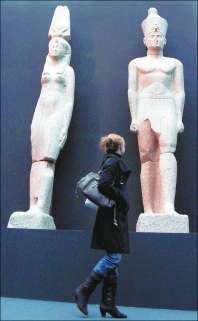
The Chronicle Herald/AP
|
|
Now, an exhibit at Paris’ Grand Palais brings together 500 ancient artifacts recovered from the area by underwater archaeologists using sophisticated nuclear technology.
Egypt’s Sunken Treasures features colossuses of pink granite, a 17-tonne slab inscribed with hieroglyphics, a phalanx of crouching sphinx, pottery, amulets and gold coins and jewellery — all painstakingly fished out of the Mediterranean. Some of the oldest artifacts are estimated to have spent 2,000 years underwater.
The show, which runs through mid-March, spans more than 1,500 years of Egyptian history and traces the decline of the Pharaohs and occupations by Greeks, Romans and Byzantines.
|
‘This is not your usual Ancient Egypt exhibit’, said archaeologist Franck Goddio, who led the expedition for the European Institute of Submarine Archaeology. ‘The artifacts have been living together under the sea for millennia, not gathering dust on a museum shelf.’.
Goddio’s team began its search in 1996, using such technology as sonar, depth-finders and sounding equipment. They worked with France’s Atomic Energy Commission to develop a device that measures objects’ nuclear resonance to pinpoint the exact locations of the port and two other sites, the lost cities of Herakleion and Canopus.”
[Full Story]
“4,000-year-old Seahenge to rise again – but not until 2008”
December 13, 2006, Kings Lynn Today, England:
“Conservation work on the Seahenge wooden circle is continuing apace – but it will be at least a year before the Bronze Age monument will be on display in Lynn.
The 4,000-year-old structure was uncovered by waves on the beach at Holme in 1998, sparking frenzied interest from the archaeological community.
|
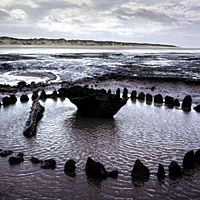
Kings Lynn Today
|
|
In 1999 the pieces were excavated and preserved before they were handed to the Mary Rose Trust in Portsmouth for conservation, with the ultimate aim of putting them on display in Lynn.
The pieces chosen to go on display in Lynn Museum are currently being removed from a waxy substance called peg, which holds the wood fibres together.
|
Over the next two or three months they will be freeze-dried to remove any remaining water, before they are cleaned by experts and transported to Lynn Museum.
Robin Hanley, area museums manager for West Norfolk, said staff will spend the following six months painstakingly creating mounts and supports for the individual pieces.
He said: ‘It is a slow and complicated process, and one which there is no value in rushing.’. Work on creating the Seahenge display will not begin until work on The Story of West Norfolk display is complete.”
[Full Story]
“Wanli: The untold story from the deep”
December 06, 2006, The Brunei Times, Brunei Darussalam:
“In the year 1625, a Portuguese vessel set off from China on a voyage to the Straits of Malacca. Onboard were tonnes of chinaware and pottery that would bring lucrative profits for the Portuguese.
However, the ship now named Wanli never reached the Malacca as she sank half way sailing through the South China Sea. The ill-fated voyage of Wanli remained a mystery until almost four centuries later when the wreck and her cargo were discovered off the coast of Terengganu.
A team of researchers led by Kuala Rompin-based marine archeologist Stan Sjostrand discovered the vessel in November 2003. It was later named The Wanli Shipwreck based on the manufacturing date on a few of the porcelain shards collected by the team.
During the team’s search and investigation in 2004, parts of the cargo comprising the priceless blue-and-white pottery and ocher wares were also recovered.
A trained naval architect, Sjostrand was also involved in the discovery of at least 10 shipwrecks and the excavation of their artifacts in Malaysian waters. Among them are the Tanjung Simpang wreck, Turiang wreck, the Royal Nanhai, the Nanyang and the Desaru wreck.
With limited resources available on the country’s maritime history, Sjostrand says findings from these shipwrecks could provide clues and a clearer picture of the maritime industry’s progress in the bygone era.
He likened the shipwrecks as part of the missing puzzle of the early history of maritime trade.”
[Full Story]
“Greek Experts to Help Recover Persian Gulf Shipwreck”
December 03, 2006, ICHNA, Iran:
“A group of underwater archeologists from Greece is to come to Iran to help Iranian archeologists recover remains of a Partho-Sassanid shipwreck and its cargo, found recently in the Persian Gulf.
Iran’s Archeology Research Center has invited a team of underwater archeologists from Greece to come to Iran to help the Iranian archeologists in raising the newly discovered ancient shipwreck from the Persian Gulf.
|
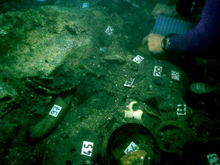
ICHNA, Iran
|
|
According to Hossein Tofighian, head of the underwater archeology department of Iran’s Archeology Research Center, the decision to invite Greek archeologists to Iran was made during the recent visit of Director of the Research Center of Iran’s Cultural Heritage and Tourism Organization, Dr. Taha Hashemi, to this country.
|
The ship was accidentally discovered almost three months ago near the port of Siraf at a depth of 70 meters below the Persian Gulf. Initial studies by Iranian underwater archeologists on the ship and its massive cargo revealed that it was a merchant ship belonging to either the Parthian (248 BC – 224 AD) or Sassanid (224 – 651 AD) empires.
From the early days of this discovery, recovery of the Partho-Sassanid shipwreck of the Persian Gulf was seen far from being just a simple archeology expedition.
Considering the lack of experience as well as the insufficient equipments in underwater archeology in Iran, the Iranian archeologists concluded that the current state of technology in underwater archeology in Iran can not meet the demands of such massive project.
Ever since the discovery of this merchant ship in the Persian Gulf, the necessity to purchase advanced diving equipments is felt more than ever in Iran.”
[Full Story]
“The gears of the ancient mariner”
November 29, 2006, ARS Technica, USA:
“The discovery of a nearly intact Roman shipwreck at the beginning of the last century provided a wealth of information about the trade among the Mediterranean cities of the time. But the most startling item to come out of the wreck wasn’t a work of art or a luxury item in the traditional sense.
|
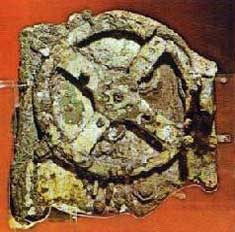
ARS Technica
|
|
While drying out after recovery, an otherwise inauspicious looking lump cracked open to reveal the completely unexpected: interlocking metal gears of the type that any of us would recognize as machinery. I’d imagine it would have been like opening a time capsule dating from the 1850s and discovering a laser pointer.
What the gears did, however, has been the subject of contentious debate.
|
In the centuries since it wound up on the sea floor, many of the metal parts had become compressed and encrusted to the point where it was difficult to tell where one part ended and the next began. The most complete reconstruction suggested that it might be an astronomical device, but there was little consensus on this proposal.
Now, a combination of X-ray tomography and analysis of the text and symbols has revealed many features of the device in stunning detail.
The new reconstruction proposes a mechanism involving 37 individual gears, with all but five of them having been recovered from the wreck. When functioning, a hand crank could send the device forward or backwards in time, with the faces revealing the relationship between dates, eclipses, lunar position, and other astronomical events relative to the ancient Greek calendar.
The device is sophisticated enough to include a mechanism that accurately recapitulates changes in the moon’s apparent motion due to its orbit being centered on the center of mass of the earth/moon system.
That last bit is especially intriguing, since these changes were first described by Hipparchus of Rhodes at roughly the time of the device’s origin, and the wreck itself contained other material from Rhodes. This raises the possibility that the device was potentially created with his direct input.
The new description raises an obvious question: why did devices of this sophistication take about 1,000 years to reappear? There are reasons to think that they may have been somewhat common in ancient Greece, but most were destroyed so that their valuable metals could be reused.”
[Full Story & Readers Comments]
“Recovering Chile’s 19th century shipwrecks
in Valparaíso’s port”
November 25, 2006, The Santiago Times, Chile:
“A delicately elaborated nautical telescope, metal handheld lamps, intact pieces of dinnerware, and even a sailor’s shoe buckle are among the artifacts recovered from a sunken merchant ship in the bay of Valparaíso, discovered by a submarine sent out to monitor the progress of a project to make the bay deeper. The ship used Valparaíso as a port of call.
|
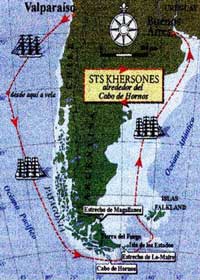
The Santiago Times, Chile
|
|
This archaeological discovery comes from one of the nearly 600 shipwrecks that occurred over the past three centuries in the Valparaíso bay.
Little is known for certain about the ship. Nevertheless, through an analysis of the pieces recovered and an archaeological report done by the company Arka Consultores, it appears to be an English merchant ship, which in the mid-nineteenth century ran a route from Great Britain to the west coast of North America.
|
The remains were discovered by experts contracted by the Terminal Pacifico Sur firm (TPS), who are carrying out the bay expansion project to accommodate larger boats.
Through submarine investigation, it was verified that the ship was found nearly entirely buried and covered in sediment at about 17 meters depth.”
[Full Story]
“ASI finds carved rocks near Mahabalipuram”
November 19, 2006, NDTV News, India:
“Rocks with step-like cuttings, a wall and carved blocks have been found under the sea in the southern coast near the heritage site of Mahabalipuram. The Archaeological Survey of India (ASI) came across the remains while recently conducting excavations underwater at the site in Tamil Nadu.
‘Mahabalipuram is a historical place. We started detailed excavation 500 metres from the shore in the sea and recently came across different types of rocks, which indicate human activity’, said Alok Tripathy, Superintending Archaeologist of ASI’s Underwater Archaeology Wing.
‘We have also found a wall running from the shore into the sea’, he added.
The rocks, which were covered with a lot of vegetation were examined by experts and the cuttings on them were found to have many similarities with carved rocks on the shore, he said.
‘There are rocks having step-like cuttings and holes on them. All these designs are similar to the rock ‘cttings found on the shore near the main existing temple which is famous for its rock art,” he said.”
[Full Story]
“Java sunken treasure to be sold”
November 19, 2006, BBC News Online/AFP, UK:
“Scientists in Indonesia are preparing to auction tens of thousands of artefacts salvaged from a sunken ship off the coast of Java.
|
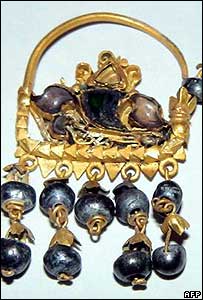
BBC/AFP
|
|
The items, which are believed to be more than 1,000 years old, include ceramics, tombstones and swords.
The ancient treasure, which was discovered 18 months ago, is expected to fetch several million US dollars. About 150,000 pieces are still intact and some of them are expected to go to Indonesia’s museums.
Salvaged after 1,000 years at the bottom of the sea, the haul includes bowls from China, Thailand and Vietnam; perfume bottles from Persia; and swords and tablets engraved with Koranic inscriptions.
|
They were only discovered when fishermen off the coast of Java brought up nets clogged with shards of ancient ceramics.
According to Hirst Leedna, an expert involved in cataloguing the find, the artefacts probably came from onboard an Indonesian trading ship.”
[Full Story]
“Archaeologists announce find at supposed QAR site”
November 18, 2006, Sun Journal/Freedom ENC, USA:
“Ten years ago a private research firm recovered a brass bell from a shipwreck site in Beaufort Inlet believed to be the Queen Anne’s Revenge.
|
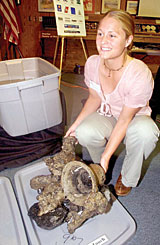
Sun Journal/Freedom ENC
|
|
The bell inscription, IHS Maria, gave few clues to the ship’s identity.
State archaeologists announced Friday they found another bell on the shipwreck site that they are hoping will be the ‘smoking blunderbuss’ that positively links the ship and Blackbeard.
I have all suspicion that the one that’s just recently been discovered is indeed the ship’s bell, but who knows’, said David Moore, nautical archaeologist with the N.C. Maritime Museum.
|
The new bell is about 8 1/2 inches tall, roughly half the height of the one found in 1996, said Sarah Watkins-Kenney, QAR Project conservator.
Rings of the bell are visible through the concretion and the concretion it is in has been x-rayed, said QAR Assistant Conservator Wendy Welsh.”
[Full Story]
“Ancient food jars fare well under the sea”
November 18, 2006, Los Angeles Times/AP, USA:
“About 1,500 amphorae are part of the cargo scientists are sorting from a Roman ship that sank 2,000 years ago.
Archeologists have started exploring a sunken 1st century Roman vessel carrying about 1,500 clay amphorae, some still containing nearly 2,000-year-old fish bones nestled inside.
Boaters found its cargo of amphorae in 2000 when their anchor got tangled with one of the two-handled jars. Exploration of the site a mile off Alicante in southern Spain began in July, said Carles de Juan, a co-director of the project, who works for the Valencia regional government.
The ship, estimated to be 100 feet long with a capacity for about 400 tons of cargo, is twice the size of most other Roman shipwrecks found in the Mediterranean, De Juan said. The well-preserved clay amphorae were used to hold fish sauce — a prized condiment for wealthy Romans, he said.”
[Full Story]
“Dazzling discovery in waters off Spain: 1st-century vessel”
November 13, 2006, EiTB24, Spain:
“The remains were discovered by accident in 2000 and after years of arranging financing and assembling crews, exploration of the site off Alicante in southeast Spain began in July.
The ship is estimated to have been 30 meters (100 feet) long with capacity for around 400 tonnes of cargo, making it much larger than other Roman shipwrecks found in the Mediterranean, de Juan said in an interview.
The ship probably sank in a storm while sailing from Cadiz in the south of what is now Spain back to Rome”
[Full Story]
“Spanish researchers delighted with first-century
Roman shipwreck”
November 13, 2006, USA Today, USA:
Marine archeologists in Spain said Monday that the shipwreck of a first-century vessel carrying delicacies to the richest palates of the Roman Empire had proved to be a dazzling find, with bones still nestling inside two-handled clay jars of fish sauce.
|
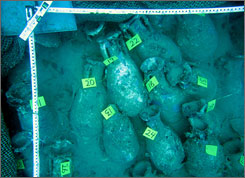
USA Today
|
|
Recreational sailors came across the remains in 2000 when an anchor was tangled up in them in shallow waters, and after years of arranging financing and assembling crews, exploration of the site off Alicante in southeast Spain began in July, said Carles de Juan, a co-director of the project, who works for the Valencia regional government.
|
The ship is estimated to have been 100 feet long with capacity for around 400 tons of cargo, making it twice the size of most other Roman shipwrecks found in the Mediterranean, de Juan said in an interview with the Associated Press.
The freight was an estimated 1,500 well-preserved clay amphoras, or two-handled jars, used in this case to hold fish sauce — a prized condiment for wealthy Romans, he said.
For centuries the meter-tall amphoras lay undisturbed but for an occasional octopus that would pry one open, breaking the ceramic-and-mortar seal in search of food or shelter.
Besides the size of the ship and good condition of its cargo, the site is also important because it is so easily accessible — in just 80 feet of water about one mile from the coast. Other wrecks are so deep they cannot be examined by scuba divers.”
[Full Story]
“Iran facing problems raising ancient ship from Persian Gulf”
November 10, 2006, Mehr News, Iran:
“Iranian archaeologists plan to raise an ancient ship recently discovered in the Persian Gulf, but they lack the equipment necessary to allow divers to work at a depth of 70 meters.
The ship was discovered about two months ago by Daryakav Company workers who were fishing in the Persian Gulf. Archaeologists believe it dates back to the Parthian or Sassanid eras based on the shards brought up in fishing nets and the large amphorae discovered on the ship. Amphorae were used during the Parthian and Sassanid eras.
‘Raising the ship is a major operation which requires skillful human resources and equipment’, Daryakav managing director Zolfaqar Arabzadeh told the Persian service of CHN on Thursday.
Diving with ordinary equipment would be lethal at a depth of over 40 meters.
‘The ship and its cargo are 70 meters underwater and diving without special equipment would result in the death of divers at such a depth. Thus we need saturation diving equipment’, he added.”
[Full Story]
“Divers end research expedition to Queen Anne’s Revenge”
November 10, 2006, CDNN, USA:
“Little things turned out to be some of the biggest finds this fall from a shipwreck thought to be the Queen Anne’s Revenge.
And though archaeologists packed up their gear Wednesday and ended a five-week diving expedition at the site, they still have sand from some of the excavation units to sift through.
‘There may be some interesting things that show up in there’, said Richard Lawrence, head of the state Underwater Archaeology Unit. That’s how they found the small brass rooster finial, the apothecary weight and gold dust earlier in the expedition, said Chris Southerly, project archaeologist and field director.
After using a sluice to separate heavier objects, archaeologists then pan the sand, Southerly explained.
Archaeologists also hope to discover the contents of some of the unidentifiable concretions they recovered as they more closely examine and x-ray them in the lab.”
[Full Story]
“Persian Gulf Shipwreck Continues to Remain a Mystery”
November 10, 2006, Payvand, Iran:
“Persian (Iranian) archeologists are determined to take the remains of the recently discovered Partho-Sassanid shipwreck and its cargo out of the waters of the Persian Gulf; however, there are many challenges and obstacles along the way. – View Movie
|
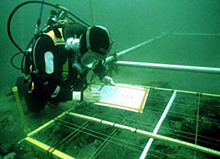
Payvand, Iran
|
|
‘Death Trap!’ This is what archeologists call the area 70 meters below the waters of the Persian Gulf where nearly two months ago the remains of a merchant ship belonging to either of the two superpowers of Ancient Persia, namely the Parthian (248 BC – 224 AD) or Sassanid (224-651 AD) empires, were discovered.
|
Lack of sufficient facilities has turned salvation of this Partho-Sassanid shipwreck a challenging task.
The Persian Gulf is a hot spot for oil companies whose ships continuously sweep over this body of water searching for new oil and gas resources.
Nevertheless, until last September no one was aware of the existence of an ancient ship sunken in the Persian Gulf near the port of Siraf until the local fishermen got hold of an unknown giant ship below the waters.
Once the news was spread, archeologists from all over the country and abroad were excited to start excavation of the ship, not knowing of the huge obstacles ahead.”
[Full Story]
“Thai antiquities unveiled to show true face of Buddhist culture”
November 10, 2006, VNS, Viet Nam:
“An awe-inspiring array of Thailand’s antiquities has surfaced from the storage room of the National Museum of Vietnamese History to put a physical face on Buddhist culture.
Starting today, visitors will have chance to admire 200 objects for either domestic or ritual use, including abundant amounts of ceramic, bronze and wood materials dated from 19th and 20th centuries all the way back to the 4th century BC.
Statues of the Buddha in the collection are bronze enamel with gold decorative patterns that demonstrate skilful and clever hands of the ancient Thai artists as well as the historical development of typical Buddhist characteristics in Thai culture.
Apart from motif and ritual activities of Buddhism, the Thai national religion, appearance of Shimha lion, Garuda mythical bird or Kinari celestial female singers made of wood or oyster shells introduces the Thai architectural decorations influenced from the art style of Hinduism.
Objects on display were mainly excavated from shipwrecks found in Viet Nam’s Kien Giang Province.”
[Full Story]
“Wrecks to riches: Siren song of treasure hunt”
November 05, 2006, The Philadelphia Inquirer, USA:
“Taking a company public is risky. Searching for buried treasure is chancier. Staking a claim on government artifacts may be plain lunacy.
Put them together, however, and you have the makings of a viable treasure-hunting business. Or so hopes a group of Bucks County entrepreneurs, who took their shipwreck salvage business public last year and now have an international fracas on their hands.
Sovereign Exploration Associates International Inc., of Newtown, believes it has pinpointed off the coast of Nova Scotia a trove of 19th-century artifacts and coins from the White House and U.S. Treasury that the British plundered during the War of 1812.
The company says the long-missing loot may have gone down on a British 18-gun brig, the HMS Fantome, which sank in 1814 off the coast of Halifax, then a key British port. Historians say the missing artifacts would have immeasurable historic value, but no documents have turned up proving or disproving the Fantome actually carried them.
None of that bothers modern treasure hunters. Their age-old pursuit long has been grist for Hollywood films, childhood games and seafaring eccentrics. Now, swashbuckling entrepreneurs are giving the high-risk business a 21st-century makeover in a bid for investors and public respect.”
[Full Story]
“Scientists Seek Indian History Underwater”
November 02, 2006, The Day, USA:
“They are questions that have intrigued scientists, archaeologists and historians for centuries: When did Native Americans first arrive on the North American continent, and where did they settle?
Now, Robert Ballard, president of the Institute for Exploration at Mystic Aquarium, and Kevin McBride, research director of the Mashantucket Pequot Museum, and other researchers hope to answer that question.
On Wednesday, Ballard, McBride and Dwight Coleman, the IFE’s research director, outlined plans for a multiyear expedition to chart the location of ancient coastlines now underwater, identify sites of Native American settlements and find artifacts to prove they were there and date their arrival.
‘The most important questions about early American habitation can only be addressed underwater’, said McBride, adding that the underwater vehicles and exploration technology developed by Ballard are finally making such research possible.
The work can only be done underwater because 10,000 to 20,000 years ago, ice covered much of North America. In Connecticut, it stretched all the way to the coast. Water levels were much lower, and the coastline of what is now Connecticut was 100 miles south of where it is today. In between was land that was flooded when the ice melted, and ocean levels began to rise.”
[Full Story]
“Ancient anchorage found at Netanya”
October 31, 2006, The Jerusalem Post, Israel:
“A Netanya beach lifeguard who stumbled on an iron anchor while out for a swim has led marine archeologists to uncover the first evidence of an ancient anchorage for sailing vessels in Netanya, the Israel Antiquities Authority announced Tuesday.
|
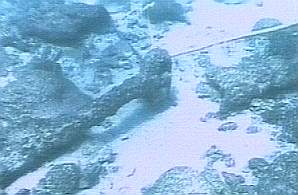
The Jerusalem Post, Israel
|
|
The lifeguard, Ofer Harmoni, 37, summoned the archeologists to the scene after noticing the iron anchor near the Netanya shore during a swimming workout two weeks ago.
The authority’s marine unit subsequently uncovered five large stone anchors dating back 4,000 years during an underwater survey at the site.
|
The anchors, which archeologists date to the late Middle Bronze Age, have a single perforation, are 0.9m high and 0.6m wide and weigh 150 kilograms each.
Two smaller stone anchors for small boats and two iron anchors which date to the Byzantine period (5th-7th centuries CE), were also removed from the seabed.”
[Full Story]
“Retrieval of heavy cannons from Blackbeard ship likely delayed”
October 30, 2006, IHT, France:
“Excavators of the sunken ship of the notorious pirate Blackbeard will have to wait to get the ship’s cannons because of a lack of equipment.
Divers with the Queen Anne’s Revenge Project say they may have to wait until spring because they do not have the right vessel to lift the cannon.
They have also determined that the 2,600-pound (1,170-kilogram) sternpost needs to come up at the same time as the cannons, and that the archaeology lab set to receive it is not yet ready, said Chris Southerly, project archaeologist.”
[Full Story]
“Neptune yields tiny treasure”
October 28, 2006, The Daily News, USA:
“Underwater archaeologists found something to crow about this week on the Queen Anne’s Revenge shipwreck site.
Divers discovered a 1-inch-high brass rooster, the decorative top to something — but they don’t know what.
‘On the base, you can tell where the metal broke off’, said Linda Carnes-McNaughton, a historical archaeologist with Fort Bragg who volunteered this week with the QAR Project.
Such finials adorned a wide variety of items in the 18th century, so it could have broken off of a weapon or even a personal box, Carnes-McNaughton said.”
[Full Story]
“Lake Tahoe Landslide Caused Ancient Tsunami”
October 28, 2006, Fox News, USA:
“A massive underwater landslide in Lake Tahoe thousands of years ago caused a tsunami and left ripplelike stony ridges on the lake bottom, according to a new study.
Three scuba divers, a robot submarine and researchers from the University of Nevada in Reno and the U.S. Geological Survey spent two years surveying the bottom of Lake Tahoe to piece together the landslide’s story. Their findings are being published in the November issue of Geology magazine.
The waves created by the slide traveled 12 miles and must have splashed tremendously high when they reached the lake’s eastern shore, said survey leader James G. Moore of the Geological Survey.
The landslide weakened the Tahoe shore on the lake’s west side where McKinney Bay is today, sending a cascade of boulders, rocks and soil plunging more than 1,500 feet to the lake bottom.”
[Full Story]
“Archaeologists find huge stash of Bronze Age anchors”
October 18, 2006, Cyprus Mail, Cyprus:
“Cyprus’ reputation as an archeological gold mine has been given another boost, with an important underwater Bronze Age discovery.
A team of maritime archeologists from the UK has uncovered 120 stone anchors off the coast of Paphos. The anchors, some of which date back to the Bronze Age (2500-1125BC), are the second largest collection in the eastern Mediterranean.
The fact that so many anchors have been found at the same site suggests that the area may have once been an important port, serving the maritime traders on the busy trade routes to and from the east.
There have also been suggestions that the port may have been used to transport pilgrims to and from Palaipaphos and the Sanctuary of Aphrodite, from all around the Mediterranean world.”
[Full Story]
“Scuba looters face up to four years in jail”
October 16, 2006, CDNN, New Zealand:
“Three divers accused of modern-day piracy after a shipwreck was allegedly looted are due to go on trial in Italy today.
Nicholas Pearson, a property developer from Yarmouth, David Dixon, a marine consultant from Aylsham, and Kerr Sinclair, a diver from Corton, near Lowestoft, are accused of illegally diving and damaging the wreck of the Pollux, an Italian steamship which sank off the island of Elba in 1841.
If found guilty of stealing items from the wreck and damaging the artistic and cultural patrimony of property belonging to Italy, the men face up to four years in jail.
After three weeks of diving, they had recovered 311 French and Spanish gold coins, 2,000 silver coins, some diamonds and a gold locket believed to contain a lock of Napoleon’s hair.
At the time of the initial police investigation in 2001, they told the EDP they had consent from both the British and Italian governments and had stumbled across the Pollux while looking for another wreck. All three had hoped the matter was at an end after spending months on police bail and paying a fine to British authorities.
Yesterday, Mr Pearson and Mr Dixon were unavailable for comment, but Mr Sinclair said: ‘I thought this was all over. I’m sorry for what happened, and we did give everything back.’“
[Full Story]
“Three on trial for salvaging ship’s treasure”
October 16, 2006, The Daily Telegraph, UK:
“Three Britons are due to go on trial in Italy today accused of illegally salvaging more than £320,000 worth of gold, silver and diamonds from a shipwreck. Nicholas Pearson, David Dixon, and Kerr Sinclair are accused of illegally diving and damaging the wreck of the Pollux, an Italian steam ship which sank off the coast of Elba in 1841.
|
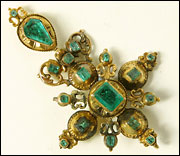
The Daily Telegraph
|
|
The three men, along with five other Britons, chartered a salvage ship in 2000 and bought a £2,500 licence to retrieve tin ingots from the Glen Logan, a British merchant ship torpedoed by a U-boat in 1916 near the island of Stromboli in the Tyrrhenian Sea.
However, instead of working on the Glen Logan, the men diverted their course 460 miles north and found the wreck of the 150ft Pollux.
|
Pascal Kainac, a historian from Paris, will also stand trial today at Portoferraio in Elba for supplying the men with the ancient maps and co-ordinates to help them find the Pollux.
After three weeks of diving, the men recovered 311 French and Spanish gold coins, 2,000 silver coins, some diamonds and other pieces of jewellery.”
[Full Story]
“Spot on historic register sought”
October 08, 2006, NewsZap, USA:
“Delaware’s underwater ‘big dig’ has resumed and numerous new artifacts from the state’s oldest-known shipwreck have surfaced.
The Roosevelt Inlet shipwreck, which archaeologists have been studying for nearly two years, is believed to be British commercial vessel the Severn, which sank in May 1774.
Archaeologists and beachcombers have recovered more than 45,000 artifacts from the vessel and more are being unearthed each day. Additionally, the state has applied to list the shipwreck on the National Register of Historic Places.
‘This is an exciting chapter in Delaware’s maritime history’, Secretary of State Harriet Smith Windsor said Wednesday during a briefing on the resumption of recovery efforts.
Mrs. Windsor marveled at how far the state has come since announcing the discovery of the buried ship.”
[Full Story]
“$1 billion treasure hunt”
October 08, 2006, Orlando Sentinel, USA:
“Haig Jacobs emerges from the Pacific waters and punches a triumphant fist skyward. ‘It’s gold, fellows! It’s pure gold!’ he shouts to fellow treasure hunters aboard the salvage boat Nautilus.
Then he opens his palm, revealing a lump of mud hiding a spool of pure gold thread — more evidence the team has discovered the 400-year-old hiding place of a sunken, treasure-filled Spanish galleon.
Led by Joel Ruth of Brevard County, Los Caballeros Aventureros – The Gentlemen Adventurers, loosely translated – have wrested enough galleon remnants to bolster their dreams of making the find of a lifetime beneath the sands and volcanic mud off Ecuador’s north coast, 13 miles from the equator.
The Nuestra Senora de la Magdalena (Our Lady of Magdalene) sank about a mile off the Jama River in 1612, where the sea’s treacherous shoals swallowed the ship. In the hold was a king’s ransom of gold, silver and gems.
Centuries-old ship manifests stored in Seville, Spain, value the treasure at more than $1 billion.”
[Full Story]
“Cyprus in Law of the Sea Court celebrations”
October 02, 2006, Financial Mirror, Cyprus:
“Cyprus has marked in a novel way its participation in celebrations to commemorate ten years since the establishment of the International Court of the Law of the Sea.
The Republic’s Ambassador to Germany, Leonidas Markides, handed to the Court, based in Hambourg, a replica of the Kyrenia ship, as a sign of respect and appreciation for the work of the Court.
The ancient Kyrenia ship was discovered by a Cypriot diver in the mid ?60s off the island’s northern coastal town of Kyrenia, under Turkish occupation since 1974, and has been on display since its discovery.
It offered historians a valuable insight into the shipping and trade industry of its era, around 300 BC.
The ship was a small Greek trade vessel carrying a cargo of wine in Rhodian amphorae and sank off Kyrenia coast around 306 BC. The hull was about 15 m. long and was protected from fouling by a lead cover.”
[Full Story]
“Drake Passage Hides A Fragment Of The Ancient Continent”
September 14, 2006, Russia InfoCentre, Russia:
“Joint Russian and German bottom survey of World ocean’s southern part near the Drake Passage resulted in discovery of the previously unknown vast underwater plateau Pirie.
|
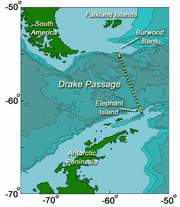
Russia InfoCentre
|
|
Scientists from Russian Institute of Geochemistry and Analytical Chemistry and German Polar and Marine Research Institute consider the Pirie Plateau to be a piece of the ancient continent Gondwana, which affects ice regime of Antarctica, thermal regime of World ocean and Earth’s climate.
The Pirie Plateau appears to be a top of a micro-continent and, together with Bruce-Discovery plateau, forms a large fragment of the ancient continent Gondwana.
|
Long ago this hilly plateau was a part of the continental bridge between South America and West Antarctica.”
[Full Story]
“Shipwreck Artefacts For Sale At Aquaria”
September 13, 2006, Bernama, Malaysia:
“A large number artefacts recovered from nine historical shipwrecks off the coasts of Malaysia, spanning more than 1,000 years, will be on display and put up for sale at Aquaria, Kuala Lumpur Convention Centre here next month.
The month-long event starting from Oct 1, will offer for sale items such as urns, bowls, bronze gongs, plates, Ming blue and white china with dragon and phoenix motifs, gourd bottles, Qing blue and white porcelain from the famous kilns in Jingdezhen, and teapots from Jiangsu, China.
The items come with historical backgrounds.
‘There is no point in buying artefacts worth thousands of ringgit just to brag about the value. What is important to me is that Malaysians buy the artefacts and learn about the history of the items’, said Sten Sjostrand, managing director of Nanhai Marine Archaeology Sdn Bhd.”
[Full Story]
“Ancient gold coins found in Kyrgyz mountain lake”
August 30, 2006, RIA Novosti, Russia:
“Possibly the world’s most ancient gold coin has been discovered in a high mountain lake in Kyrgyzstan, the chief of an archeological expedition said Wednesday.
Academic Vladimir Ploskikh said an expedition from the Kyrgyz-Russian Slavic University found a 70-gram octagonal gold artifact on the northern side of Lake Issuk-Kul.”
[Full Story]
“Dive crews explore sunken ship off Port Aransas”
August 29, 2006, Houston Chronicle, USA:
“Divers investigating a newly discovered sunken ship in a channel near Port Aransas said an exploratory dive provided some answers but also raised lots of questions.
The team of divers made a reconnaissance dive Monday to examine the ship, which a parasailer spotted this summer in about 20 feet of water near San Jose Island.
‘It’s a lot older than I thought it would be’, said Steve Hoyt, a marine archaeologist with the Texas Historical Commission.
After eight dives on Monday, Hoyt said the vessel could date as far back as the late 1800s or early 1900s. The team determined the ship had a wooden hull and was steam-driven.”
[Full Story]
“Ancient treasures from shipwrecks on display”
August 24, 2006, Nhân Dân, Viet Nam:
“Ancient treasures from five ships sunken in Vietnam’s waters are now on display for the first time in Can Tho city, the Mekong Delta.
The exhibition, jointly organised by the Can Tho City Museum and the Vietnam History Museum with the theme “Treasures From Five Ancient Shipwrecks in Vietnam’s seas,” was opened on Aug. 22.
On show are many documentary films and photos as well as more than 400 artifacts selected from about 10,000 items retrieved from the five sunken vessels off Quang Nam, Ba Ria-Vung Tau, Kien Giang, Binh Thuan and Ca Mau provinces.”
[Full Story]
“Spanish galleon wreckage found?”
August 24, 2006, The Charlotte Observer, USA:
“Divers found an object underwater Wednesday that might be the wreckage of a 500-year-old Spanish ship, South Carolina officials say.
The ship was a lead vessel in an expedition headed by the first European explorer of South Carolina — and the first European possibly to have landed along the North Carolina coast.
Underwater archaeologists found an object, perhaps 100 feet long, buried under sand in water near South Island, off Georgetown County.
The discovery was announced by Jim Spirek, of the S.C. Institute of Archaeology and Anthropology. It was reported in today’s editions of the Myrtle Beach Sun-News.”
[Full Story]
“Villager helps search for artifacts in sunken wreck”
August 21, 2006, The Villages Daily Sun, USA:
“Villager Bob Petrucelli is at home 15 feet under the ocean’s surface. So at home, he says, he’s surprised he hasn’t sprouted gills during a lifetime of diving for buried artifacts.
‘I’ve been diving since the ’60s’, Petrucelli said. ‘I love working underwater.’.
Lately, Petrucelli has been helping an archaeologist and his team in an excavation off the coast of the Dominican Republic, trying to find artifacts from a British ship that was sunk between 1652 and 1659. The team determined the artifacts originated in the 17th century ‘based on silver coins down there’, Petrucelli said.
The wreck is in shallow water and is referred to as the Monte Cristi Shipwreck Project. The project has been featured in the September 2002 issue of ‘Scuba Diving’, when the now-clean-shaven Petrucelli had a beard and mustache. He’s known Jerome Lynn Hall, the lead archaeologist on the project, since 1991.”
[Full Story]
“A 3,000-year-old voyage of discovery”
August 1, 2006, The Scotsman, Scotland:
“In ancient times, when Scotland was virtually covered in dense forest, there was only one way to get around. Traveling by boat helped early Scots to find food and trade goods with their neighbours.
|
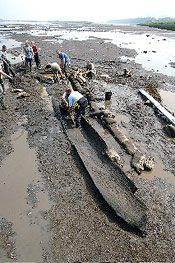
The Scotsman
|
|
Now, with the excavation of a 3,000-year-old log boat, archaeologists are hoping to learn more about how prehistoric Scots used the vast network of rivers and lochs.
The Bronze Age dug-out was found in mudflats at Carpow, on the south side of the River Tay estuary, in autumn 2001. A group of three amateur archaeologists – Scott McGuckin, Martin Brooks and Robert Fotheringham – had spotted the worn but still recognisable prow of boat sticking out from the mud and peat.
|
Radio carbon tests conducted later dated the 30-foot-long log boat, which had been carved out of a single piece of oak, to around 1000BC. This means the Carpow boat is the second-oldest dated log boat ever found in Scotland, and it is also one of the best preserved.
The boat was found on an eroding peat shelf, and is only visible twice a day at low tide. Archaeologists believe it was washed downstream from either the River Tay or the River Earn, another tributary of the Tay estuary.”
[Full Story]
“Ancient shipwrecks found”
July 30, 2006, The Star, Malaysia:
“Three shipwrecks including one resembling a Portuguese warship have been discovered in the Straits of Malacca.
|
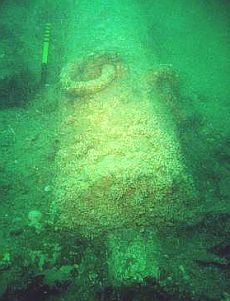
The Star, Malaysia
|
|
Well-known Australian maritime archaeologist Dr Michael Flecker, who has carried out more than 100 explorations in numerous countries around the region, made the latest discovery during a blanket survey along the Straits last year.
‘At one location, I have found two vessels lying side by side’, said Dr Flecker, who was reluctant to reveal the actual location to prevent looting.
He also revealed pictures he had taken of cannons, cannon balls, bones of animals that were consumed on the ships and broken Ming dynasty porcelain.
|
Dr Flecker is the managing director of Maritime Explorations and has been involved in underwater explorations for the past 20 years. He said the warship was located in an area between Pulau Upeh and Pulau Panjang off the coast of Malacca.
‘This is an important find as this shows that the locals resisted the Portuguese occupation of Malacca’, he said, speculating that the ship could have been taken down by an Acehnese war fleet.”
[Full Story]
“3,000-year-old log boat to be raised from Tay estuary”
July 28, 2006, 24 Hour Museum, UK:
“One of the oldest boats discovered in Scotland is being excavated and raised from its site in the Tay Estuary. The Carpow log boat, as it is known, situated near Abernethy, was discovered in 2000.
|
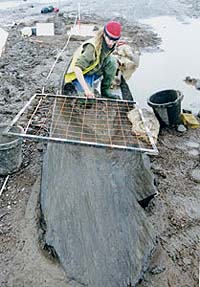
24 Hour Museum
|
|
Identifying it as a log boat, used for fishing and wildfowling, Perth and Kinross Heritage Trust radiocarbon dated it to 1000BC – the late Bronze Age.
Archaeologist David Strachan of the Trust explained: ‘It was discovered in 2000 by a metal detectorist – half of it was sticking out of the mud. The buried portion of it was very well preserved with intact transom boards [stern timbers], but the exposed part is deteriorating.’
There are records of 150 log boats from Scotland, yet only 30 survive in museums or in situ and these are often distorted by shrinkage or warping.
|
Records show seven log boats found in the Tay estuary, but only one survives, in Dundee Museum. Found in 1860, it has been dated to about 500AD.
The Carpow log boat is not only one of the best preserved, but also the second oldest dated log boat from Scotland.”
[Full Story]
“Archaeologists investigate 18th Century
Scilly Isles fireship wreck”
July 27, 2006, 24 Hour Museum, UK:
“Researchers and students from the University of Bristol are investigating a fireship that sank off the Isles of Scilly nearly 300 years ago in one of the worst maritime disasters in British Naval history.
|
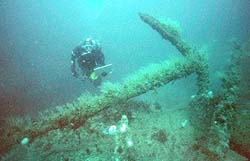
24 Hour Museum
|
|
The dive will be the first archaeological survey of HMS Firebrand and the first physical study of this type of British Royal Navy ship.
It sank along with a fleet led by Sir Cloudesly Shovell returning from Gibraltar in October 1707, when navigational error took them on to rocks.
|
Firebrand was launched at Limehouse in 1694, serving in the Caribbean and Mediterranean until her disastrous final voyage.
Fireships were loaded with incendiaries with the potential to cause a huge amount of damage sailed against enemy fleets at anchor, but they were most often used as a threatening patrol or to escort sloops in convoy.”
[Full Story]
“IU archaeologists hot on the trail of Columbus’ sunken ships”
July 27, 2006, Indiana University, USA:
“As luck would have it, time ran short, and the silt and mud in La Isabela Bay on the north coast of the Dominican Republic ran deep.
|
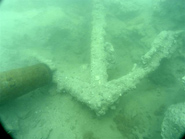
Indiana University
|
|
Despite these setbacks, Indiana University archaeologists are confident they are closer to discovering some of Christopher Columbus’ lost ships – and the answer to a 500-year-old mystery, ‘What was on those ships?’
|
‘The discovery of a Columbus shipwreck, let alone the finding of the flagship Mariagalante, would be a tremendous contribution to maritime archaeology’, said Charles Beeker, director of Academic Diving and Underwater Science Programs in IU Bloomington’s School of Health, Physical Education and Recreation.
‘Perhaps more important would be the cargo. Were the ships laden with native Taino Indian artifacts heading to Spain? Such a find would shed new light on the nature of the contact period between the Old and the New Worlds.’
Earlier this summer, Beeker and Geoffrey Conrad, director of IUB’s Mathers Museum of World Cultures, took a team of faculty and graduate students to the Dominican Republic to explore intriguing magnetometer anomalies the IU researchers had discovered 10 years ago.
The readings suggest large objects buried under silt and mud, and within coral colonies. The readings indicate also that the objects are scattered – similar to how a shipwreck, or several for that matter, would appear – in a 75-square-meter area.”
[Full Story]
“State fires broadside as explorer claims 300-year-old wreck”
July 26, 2006, The Independent, UK:
“They may, or may not, have found the wreck of the Griffon. But even before the discovery has been confirmed in the waters of north-eastern Lake Michigan, a dispute has broken out over who would own what remains of the 17th-century French vessel that experts have described as a ‘Holy Grail’ of north American marine archaeology.
The Griffon vanished – almost certainly in a storm – shortly after it set off in autumn 1679 on the return leg of its maiden voyage from Niagara at the eastern end of Lake Erie, to Green Bay on Lake Michigan.
The first-ever decked European-built ship to sail the Great Lakes took to the bottom a cargo of furs and a crew that included a legendary giant sailor called Luc the Dane.
The vessel was built by René Robert Cavelier, Sieur de La Salle, an explorer and fur trader who navigated most of the Great Lakes, discovered the mouth of the Mississippi and named its basin area Louisiana for the “Sun King” Louis XIV. La Salle, who was not on the Griffon, died in 1687.”
[Full Story]
“Divers to examine wreck off Isle of Scilly”
July 20, 2006, DIVE Magazine, England: “A team of divers from the University of Bristol plan to survey the wreck of a fireship which sank off the Isles of Scilly nearly 300 years ago.
|

DIVE Magazine
|
|
HM fireship, Firebrand, served for 13 years in the Caribbean and Mediterranean before sinking off the Isles of Scilly in October 1707 following a navigational error.
|
Fireships, such as Firebrand, were initially designed to be sailed against enemy fleets at anchor, loaded with incendiaries. More often than not, however, the vessels were used as patrol or convoy escort sloops.
More than 15,000 Royal Navy seamen lost their lives when the ill-fated fleet under the command of Sir Clowdisley Shovell, crashed into the Western Rocks off the Isles of Scilly.
The ships lost included the fleet’s flagship, HMS Association, the Romney and the Eagle. According to Bristol University, the sinking triggered the competition for the ‘discovery of longitude’ and resulted in the design of the Harrison chronometer.”
[Full Story]
“Titanic discovery engineering team recognized 20 years later”
July 14, 2006, Worcester Telegram/AP, USA:
“The first time the world saw clear images from the shipwrecked Titanic, they had a team of 10 engineers from Woods Hole to thank. But not much was heard about any of them at the time.
Most of the attention went to explorer Robert Ballard, who had discovered the sunken ship in 1985. Ballard, then director of the Woods Hole Oceanographic Institution in Cape Cod, returned from that trip with grainy, black and white images of the ship.
It wasn’t until 1986, when engineers invented a deep-water, remote-controlled robot, that the public could see high-resolution color footage of the historic wreck.
On Friday, the team of 10 engineers from Woods Hole was formally honored for its achievement with the second annual Great Moments in Engineering Award. The award was given out in Boston by GlobalSpec, an engineering search engine company.
‘This is a good example of the story behind the story. The team that did the work often is not pointed out, especially with engineers who don’t seek publicity’, said Jeff Killeen, Chairman and CEO of GlobalSpec.”
[Full Story]
“Ancient ship wreck yields antiques in Vietnam waters”
July 14, 2006, Thanh Nien News, Viet Nam:
“Vietnam province authorities recently discovered a shipwreck off the central coast loaded with antique pottery, reported central Binh Dinh province museum.
According to the museum authorities, the wreck is located at sea waters of My Duc commune of Phu My district in Binh Dinh province.
The ship is near to Hon Rua (Tortoise Island), lying on the sea bed at the depth of around 30 meters”
[Full Story]
“Seeking a ship’s watery, old grave”
July 09, 2006, Gainsville Sun, USA:
“In the 1800s, a shipwreck created a nation in the Caribbean Sea.
For the next two weeks, a pair of Gainesville marine archaeologists will search the water off the Turks and Caicos Islands looking for artifacts to positively identify the Trouvadore, a wooden-hulled slave ship that wrecked there in 1841. The African slaves that survived the wreck were freed to populate the islands.
It’s a high-profile project that’s rare in the specialized field of marine archaeology, and researchers say it could fill a gap in the historical record and give the inhabitants of the islands a material link to their past.
‘If it turns out that this is the Trouvadore, it would be huge for the nation itself’, said Jason Burns, one of the two archaeologists making the trip. ‘Pretty much anyone on the island can trace their lineage back to the wreck.’.
Michael Krivor, 38, and Burns, 34, both of Gainesville’s Southeastern Archaeological Research Inc., leave for the two-week expedition today.
The project started several years ago, when archaeologist Donald H. Keith found documentation of the slave ship, and started investigating.”
[Full Story]
“Wreck of 16th-century warship found off Cyprus”
July 03, 2006, Middle East Times, Egypt: “The remains of a Turkish ship believed to have taken part in the 1570 to 1571 Ottoman siege of Famagusta have been located off the Cyprus coast, it was reported on Sunday.
Three cannons, 25.4 centimeters (10 inches) in diameter, and an anchor were found by amateur divers 40 meters down in the Mediterranean off the city on the island’s southeast coast, ‘Politis’ newspaper said.
The find is believed to be the first of its kind.
‘Politis’ said that the ship had probably been part of the fleet of general Lala Mustafa, who lost 80,000 men before the walled city finally fell in July 1571 after a 10-month siege.
“
[Full Story]
“Existence of under-sea temple claimed”
July 03, 2006, Zee News, India: “Archaeologists in Visakhapatnam claim that a centuries-old temple exists two kilometers from Visakhapatnam coast, on the sea bed.
While the coastal city of Visakhapatnam is steeped in history, few know that there was a temple called ‘Visakeswara Temple’ on the coast of the city. Many centuries ago this temple went under the sea due to geological adjustments.
According to Professor Gangadharam, who is working on facts regarding this temple, the temple existed centuries ago, but got submerged in the sea.
‘From the research I did, I found out that the Buchca Rama Lingeshwara temple which right now exists on the coastline is in the same alignment with that of Visakeswara temple under the sea. I have spoken to many old people and fishermen who told me that their forefathers used to confirm that there is this temple under the sea.’
“
[Full Story]
|
|
To understand why this News Page is sometimes late here is some information about Fibromyalgia
if you would like to support our marine archaeology research
The Morien Institute
Research Projects
please send us a book

from our Wish List
“Under Ancient Skies: Ancient Astronomy and Terrestrial Catastrophism”
by
Paul Dunbavin

EU English Edition
“In all of the world’s myths and religions we find traditions of a Great Flood. There are stories too of a Golden Age: the antediluvian paradise that it destroyed. Might these be real memories of the ancient world? And how can we analyse the subject scientifically? The key to unlock these ancient myths lies in astronomy. “Under Ancient Skies” will examine the astronomical evidence for an ancient cataclysm and in the process will explore a number of related anomalies in prehistory, including: Was there a single great flood in human prehistory, or have there been many?
Could the workings of ancient calendars and the records of ancient eclipses give us clues about the Flood and the antediluvian world? Did the Celtic Druids use a calendar based on the orbit of Saturn; and is this the same antediluvian calendar as is described in Plato’s myth of Atlantis? Do Hindu, Chinese and Mayan cosmology myths recall the years after the Flood when our world wobbled on its axis?
Geologists have recently found the crater in Yucatan, where an asteroid impact destroyed the world of the dinosaurs. Scientists and astronomers have stopped dismissing the theory that a comet could have struck the Earth during prehistory – but any suggestion that a comet impact just a few thousand years ago might have caused the Biblical Flood, remains the last taboo. It is time for this barrier too to be washed away. If you read this book and you understand it then be warned – it may scare you!”
…
exclusive
…
October 2002
Morien Institute
illustrated interview with
Professor Masaaki Kimura
of the University of the Ruykyus,
Okinawa, Japan, regarding
the discovery of:
“Megalithic structures found underwater off the coast of
Yonaguni-jima, Japan”
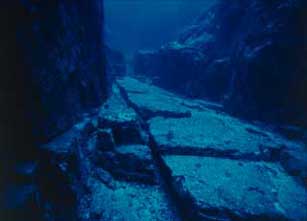
…
exclusive
…
June 2002
Morien Institute
illustrated interview with
Dr Paul Weinzweig
of Advanced Digital Communications,
Havana, Cuba, regarding
the discovery of:
“Megalithic urban ruins discovered off the coast of Cuba”
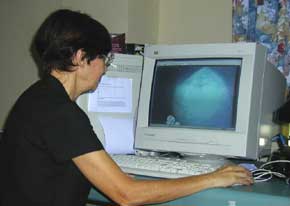
“Beneath the Seven Seas:
Adventures with the Institute of
Nautical Archaeology”
by
George F. Bass
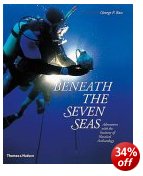
EU English Edition
“From the Pacific to the Mediterranean, from the Caribbean to the Red Sea, from northern Europe and the northern United States to the Indian Ocean, archaeologists vividly describe shipwrecks from centuries past, from the oldest and deepest ever excavated to the remains of battles in both the European and Pacific theaters of World War II.
Readers will dive nearly 200 feet with Cemal Pulak on a royal ship that sank over 3,300 years ago off the Aegean coast of Turkey, and explore with Donny Hamilton the streets and houses of the richest English colony in the New World, the infamous pirate stronghold of Port Royal, Jamaica, swallowed by the sea in 1692. They will accompany famed undersea explorer Robert Ballard, discoverer of the Titanic, as he and Cheryl Ward search for shipwrecks in the deep, oxygen-free waters of the Black Sea. They will wade with archaeologist Fred Hocker through mud along the bank of a South Carolina river, and then sail through a gale with Susan Womer Katzev on a full-scale replica of the best-preserved ancient Greek ship yet raised from the depths of the Mediterranean.
The book describes the tragic loss, within sight of their loved ones, of seamen returning home to Portugal in 1606, at the end of a two-year voyage to the East on the Nossa Senhora dos Martires, and then describes the fate of the crew of another Portuguese ship, the Santo Antonio de Tanna, which sank off Mombasa, Kenya, while trying to lift the siege of Fort Jesus by Omani Arabs in 1697. It describes the foods, games, weapons, tools, and grooming implements on a ship sailed by Bulgarian merchants around AD 1025, carrying as cargo the largest known collections of medieval Islamic glass and glazed pottery.”
“Atlantis of the West:
The Case For Britain’s Drowned Megalithic Civilization”
by
Paul Dunbavin

EU English Edition
“Do Welsh legends of lost cities beneath the sea match Plato’s descriptions of the island civilization of Atlantis? Do Irish myths of a golden age when the eastern Irish Sea was a flowery plain describe the same place Herodotus said disappeared beneath the waves during a single day and night of geological upheaval millennia before Ancient Greece?
Author and researcher Paul Dunbavin has embarked on a multidisciplinary investigation into how science could explain such a catastrophe and how modern archaeological findings point to a possible location for lost Atlantis. This book theorizes that the Middle Neolithic period around 5,000 years ago was a time of dramatic climate and sea-level changes all around the world.
From an up-to-date scientific perspective, Dunbavin distills an array of significant geological theories and then examines the archaeological and mythological record-which together leads to a lost land thousands of years ago in the Irish Sea that was still mentioned in ancient Welsh histories recorded in the 6th century.”
“Eden in the East: The Drowned Continent of Southeast Asia”
by
Stephen Oppenheimer

EU English Edition
“A book that completetly changes the established and conventional view of prehistory by relocating the Lost Eden – the world’s 1st civilization – to SouthEast Asia. At the end of the Ice Age, SouthEast Asia formed a continent twice the size of India, which included Indochina, Malaysia, Indonesia and Borneo.
The South China Sea, the Gulf of Thailand and the Java sea, which were all dry, formed the connecting parts of the continent. Geologically, this half sunken continent is the Shunda shelf or Sundaland.
He produces evidence from ethnography, archaeology, oceanography, from creation stories, myths and sagas and from linguistics and DNA analysis, to argue that this founder civilization was destroyed by a catastrophic flood, caused by a rapid rise in the sea level at the end of the last ice age.”
“Underworld: The Mysterious Origins
of Civilization”
Graham Hancock
&
Santha Faiia
(Photographer)

EU English Edition
“From Graham Hancock, bestselling author of Fingerprints of the Gods, comes a mesmerizing book that takes us on a captivating underwater voyage to find the ruins of a lost civilization that’s been hidden for thousands of years beneath the world’s oceans.
While Graham Hancock is no stranger to stirring up heated controversy among scientific experts, his books and television documentaries have intrigued millions of people around the world and influenced many to rethink their views about the origins of human civilization. Now he returns with an explosive new work of archaeological detection.
In Underworld, Hancock continues his remarkable quest underwater, where, according to almost a thousand ancient myths from every part of the globe, the ruins of a lost civilization, obliterated in a universal flood, are to be found.”
“Basic Decompression Theory and Application, Second Edition”
Bruce R. Wienke

EU English Edition
“The new 2nd Edition of Basic Decompression Theory And Application has been extended, updated, with new material added. It takes all rudiments of decompression theory and phase mechanics to considerable depth, while focusing on diving applications in an historical perspective.
Topics span many disciplines, and the targeted audience is the commercial diver, hyperbaric scientist, doctor, physical scientist, technical diver, and instructor. Recent developments in diving tables, decompression meters, and decompression management software are presented, and broad model underpinnings are detailed and contrasted.
Testing and validation of modern dual phase approaches to staging for decompression, extended range, altitude, and mixed gas diving are a focus of discussion. Deep stops, optimal gas switches, and helium mixes are underscored from diver experience, data, and coarse grain principles. References and numerical examples (with solutions) are included for more detail and extended diver analysis.”
“Discovery of Atlantis:
Startling New Evidence
and the Case for Cyprus”
Robert Sarmast

EU English Edition
“Plato provided 53 physical clues in his famous dialogue Critias–the original account of the story of Atlantis that is the sole basis of all Atlantis research.
Discovery of Atlantis proves that the island of Cyprus and the underwater landscape just south of Cyprus is a perfect match with 51 of these clues. Exclusive 3D bathymetric maps based on new scientific data show for the first time a stretch of sunken land off of Cyprus.
The general layout of the landscape of Atlantis as described by Plato is easily discernible on this underwater landmass, as well as the precise location of its capital–Atlantis City. This robust empirical data is joined with other original findings based on mythological analysis and historical research, making the case for Cyprus increasingly obvious.”
“Maritime Archaeology:
A Technical Handbook”
Jeremy Green
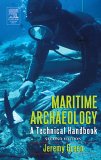
EU English Edition
“Jeremy Green’s systematic overview of maritime archaeology offers a step-by-step description of this fast-growing field. With new information about the use of computers and Global Positioning Systems, the second edition of this handbook shows how to extract as much information as possible from a site, how to record and document the data, and how to act ethically and responsibly with the artifacts.
Treating underwater archaeology as a discipline, the book demonstrates how archaeologists, “looters,” academics, and governments interact and how the market for archaeological artifacts creates obstacles and opportunities for these groups.
Well illustrated and comprehensive in its approach to the subject, this book provides an essential foundation for everybody interested in underwater environments, submerged land structures, and conditions created by sea level changes.”
“Discoveries: Underwater Archaeology”
Jean-Yves Blot & Alexandra Campbell
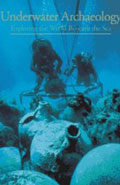
EU English Edition
“Man: 12, 000 Years Under the Sea
a Story of Underwater Archaeology”
Robert F. Burgess & George F. Bass
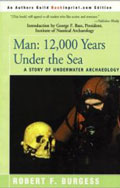
EU English Edition
“Encyclopedia of Underwater and Maritime Archaeology”
James P. Delgado
(Editor)
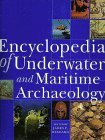
EU English Edition
“Submerged: Adventures of
America’s Most Elite
Underwater Archeology Team”
Daniel F. Lenihan
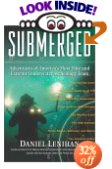
EU English Edition
“One of the world’s leading underwater archeologists recounts experiences from his 24 years as founder and head of the elite, award-winning Submerged Cultural Resources Unit (SCRU) team of the U.S. National Park Service-adventure writing at its best.
In Submerged, Lenihan (the co-author with Gene Hackman of the novel Wake of the Perdido Star) takes the reader on a kaleidoscope of underwater experiences-to ancient ruins covered by reservoirs in the desert southwest, to the lower rings of hell to retrieve the bodies of drowned divers, to gripping accounts of personal survival in underwater caves, ships, and submerged buildings. Among the astonishing, often harrowing assignments he recalls:
• The Isle Royale shipwrecks: Surveying ten large ships sunk from the mid-19th to mid-20th centuries in the middle of the frigid and deep Lake Superior. • The USS Arizona in Pearl Harbor: Executing the largest mapping project ever conducted underwater, and his personal impressions as, the leader of the first expedition to explore and video the entire ship in 1983.”
“Submerged Cultural Resource Management: Preserving and Interpreting Our Sunken
Maritime Heritage”
James D. Spirek (Editor),
Della A. Scott-Ireton (Editor)
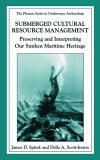
EU English Edition
“This vital book is a collection on the various ways archaeologists and resource managers have devised to make available and interpret submerged cultural resources for the public, such as underwater archaeological preserves, shipwreck trails, and land-based interpretive media and literature.
The concept of preserves, parks, and trails has proven to be an effective and popular method of public education and heritage tourism with the end result being a greater public understanding of the value of preserving and protecting shipwrecks, and other submerged cultural resources, for the future.
Within each contribution, the authors focus on: legislation; economic benefits; interpretation methods; problems and successes; future directions regarding their preserve, park, or trail programs.
Various approaches to the concept have been explored and this book is an effort to make available our experiences in the management of submerged cultural resources for the public. This volume is an invaluable resource to underwater archaeologists, cultural and heritage resource managers, museum and heritage educators and those studying these professions.”
“Successful Underwater Photography”
Brian Skerry & Howard Hall
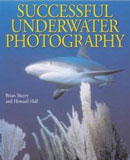
EU English Edition
“From fundamental principles of photographing marine life to making a living selling underwater photographs, Successful Underwater Photography provides an unlimited wealth of practical advice, surefire strategies, and tested tips for taking extraordinary photos of elusive underwater subjects.
Written by two top photographers who specialize in marine photography, this solid, lavishly illustrated field guide provides no-nonsense information on such topics as taking available-light photographs, silhouettes, marine wildlife portraits, close-focus wide angle photographs, and extension tube photographs to name just a few. Readers will also find proven guidance for purchasing underwater photographic equipment, taking photos of shipwrecks, and repairing and maintaining field equipment.
“Digital Imaging for the
Underwater Photographer”
Jack Drafhal & Sue Drafhal
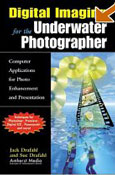
EU English Edition
“How to Solve Common Problems, Repair Images and Create Dazzling Presentations; Focusing on the aspects of digital imaging that are most important to underwater photographers, this book is a step-by-step guide for the professional and amateur alike to improve their images and presentations.
Designed to help the underwater photographer make a smooth transition to digital imaging, this book discusses how to digitally refine, correct, and enhance underwater photographs. Detailing the equipment necessary, it also includes a discussion on the essentials of scanning. There is also extensive information on Adobe Photoshop, and how it can be used to edit underwater pictures.
Designed to help the underwater photographer make a smooth transition to digital imaging, this book discusses how to digitally refine, correct, and enhance underwater photographs. Detailing the equipment necessary, it also includes a discussion on the essentials of scanning. There is also extensive information on Adobe Photoshop, and how it can be used to edit underwater pictures.
“Atlantis from a Geographer’s Perspective”
Ulf Erlingsson
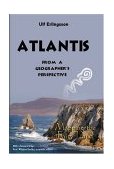
EU English Edition
if you would like to support our marine archaeology research
The Morien Institute
Research Projects
please send us a book

from our Wish List
|




































